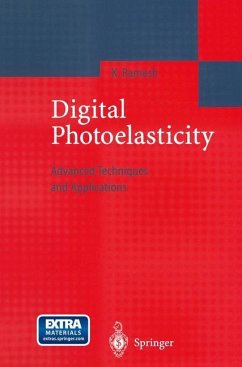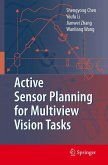Rapid strides have been made in the use of digital image processing tech niques for data acquisition in photoelasticity in the last two decades. Techniques such as fringe thinning, fringe clustering, fringe tracing, phase shifting, polarization stepping and Fourier transform methods have significantly contributed to the automation of data acquisition. The recent developments in colour image processing and development of tricolour light source have added a new dimension. The use of time delay and integration (TDI) camera techniques has extended digital photoelasticity for dynamic analysis. Now the field of Digital Photoelasticity has matured to a level where it could be used to solve problems in industries. Apart from developments in data acquisition techniques, several methods have also come into existence for efficient processing of experimental data. Extensive use of computer graphics has found a unique place in presenting the experimental results in a meaningful way. Though there has been significant developments in data processing and data acquisition in the last two decades, there is no book available yet to present these developments in a comprehensive way. The motivation for this book is based on the experience of teaching the course on Experimental Methods in Stress Analysis at lIT Kanpur for the last 10 years. I have always felt a need for introducing Digital Image Processing in an appropriate way, which will be useful for an experimentalist.
Excerpts from the Reviews of the book on Digital Photoelasticity(Pattern I)
The author has produced a first class text book that should find widespread use among students, researchers, and design engineers in many branches of engineering.....
Applied Mechanics Reviews 55(4) B69-B71 JUL 2002
The book is accompanied by a CD-ROM of the C source code of the programs referred to in the text along with some photoelasticity simulations and some hardware-specific code. The text is supported by ample end-of-chapter tutorial questions.....
Strain 38 85-86 2002
Bible of digital photoelasticity., 17 February, 2001
Not only beginners and students but also researchers, engineers and inspectors should read this book as a bible of photoelasticity.
http://www.amazon.co.uk/exec/obidos/ASIN/3540667954/qid%3D1050727743/202-1368056-3855028
....This is the first monograph in its field and forms a useful contribution...
Meas. Sci. Technol. 11 (December 2000) 1826-1827
The author has produced a first class text book that should find widespread use among students, researchers, and design engineers in many branches of engineering.....
Applied Mechanics Reviews 55(4) B69-B71 JUL 2002
The book is accompanied by a CD-ROM of the C source code of the programs referred to in the text along with some photoelasticity simulations and some hardware-specific code. The text is supported by ample end-of-chapter tutorial questions.....
Strain 38 85-86 2002
Bible of digital photoelasticity., 17 February, 2001
Not only beginners and students but also researchers, engineers and inspectors should read this book as a bible of photoelasticity.
http://www.amazon.co.uk/exec/obidos/ASIN/3540667954/qid%3D1050727743/202-1368056-3855028
....This is the first monograph in its field and forms a useful contribution...
Meas. Sci. Technol. 11 (December 2000) 1826-1827








